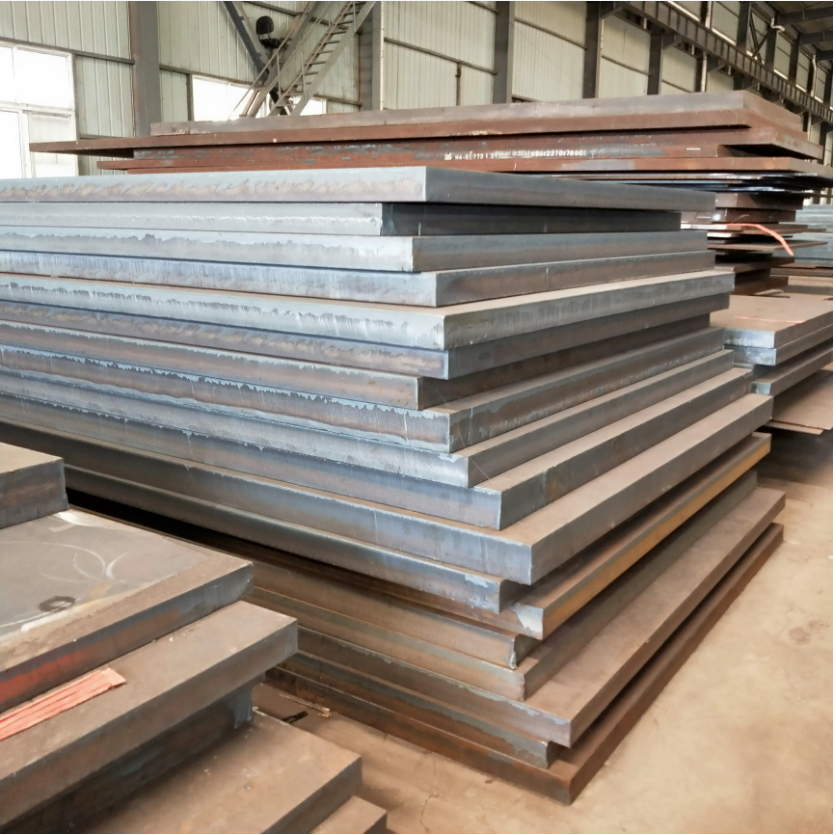Pressure Vessel Plates Steel plates used in the manufacture of steam boilers, pressure vessels and other structural parts of pressure vessels. Because this kind of steel plate bears certain air pressure and water pressure, as well as the use environment of different temperatures, such as high, medium and low temperature, etc., the requirements for this kind of steel plate are relatively strict.

Product introduction edit broadcast
(1) Definition: In addition to requiring a certain strength and toughness, the material is also required to be uniform, and harmful defects are strictly limited.
(2) Types: According to the classification of components, it can be divided into two categories: carbon steel plates and alloy steel plates; according to the classification of strength, it can be divided into high, medium and low pressure steel plates; Corroded steel plate.
The thickness of the pressure vessel plate is generally in the range of 5 to 200mm, and the period is divided into several thickness specifications. National standards list recommended sheet sizes and allowable deviations. Appearance quality (1) The shape of the steel plate: such as camber, flatness, right angle, etc. (2) Surface defects: The surface defects of steel plates mainly include cracks, scars, flattened bubbles, impurities, blisters, pores, pressed iron oxide scale, etc. For safety reasons, pressure vessel steel plates have stricter requirements on surface and internal defects. The above defects are generally not allowed. However, appropriate methods are allowed to be removed, and the removal site should be flat. Its thickness shall not exceed the allowable difference in thickness of the steel plate. Interlayers are also generally not allowed. Chemical composition index:
①Carbon steel plate: mainly detect the content of carbon, silicon, manganese, phosphorus and sulfur. Some carbon steels also contain a certain amount of copper, chromium, nickel, molybdenum, vanadium and other elements. Among them, carbon is the main factor to determine the strength of the steel plate, that is, the strength of the steel plate increases with the increase of carbon content. The carbon content of carbon steel plate is between 0.16 and 0.33%. Manganese and silicon also have the effect of improving material and increasing strength. Silicon: 0.10~0.55%, Manganese: 0.4~1.6%. Some standards do not require silicon and manganese for ordinary boiler plates, and copper is below 0.30%. Other standards such as Japan and Russia do not have copper content requirements. Some high-quality steels contain chromium (below 0.25%), nickel (below 0.30%), molybdenum (below 0.10%), and vanadium (below 0.03%). The chemical composition of boiler steel plates of various grades is shown in the product standards provided in Table 6-7-3.
② Low alloy steel plate: In addition to the elements of carbon steel, there are also a certain amount of molybdenum, chromium, nickel, vanadium, etc. There are many steel grades of low alloy steel, among which the more commonly used standards are as follows: 1/2 Mo, 1/2Mo-B steel: ASTM A204, JIS G3107; Mn-1/2Mo1/2Mo, Mn-1/2Mo-V, Mn -1/2Mo-1/4Ni, Mn1/2Mo-1/2N i steel: ASTM A302, A533, JIS G3119, G3120; 1Cr-1/2Mo, 11/4Cr-1/2Mo, 21/2Cr-1Mo, 3C r-1Mo, 5Cr-1/2Mo, 7Cr-1/2Mo, 9Cr-1Mo: JISG4109, ASTM A387, A533, DIN17155.
③ Quenched and tempered high-strength steel plate: see ASTM A517, A537, A724, A734, JISG3115.
④ Low temperature steel: including carbon steel and alloy steel. Chemical composition and mechanical properties can be found in ASTMA612, A 662, A735, A736, A738, A203, A645, JIS G3126.
⑤Stainless steel: refer to JIS G4304, ASTM A240, AISI13, ΓOCT5632.
Post time: Aug-15-2022